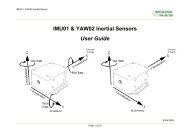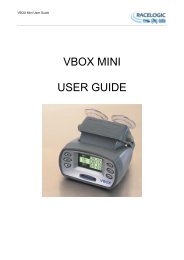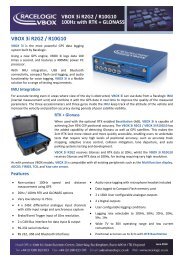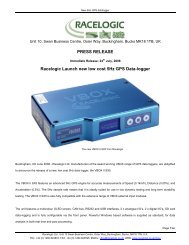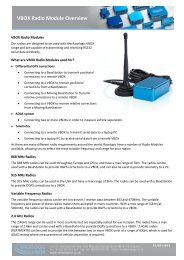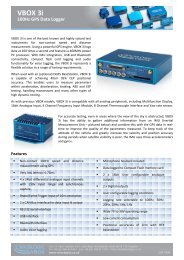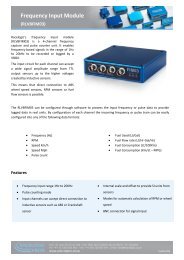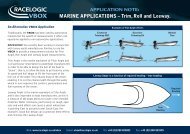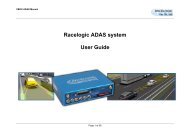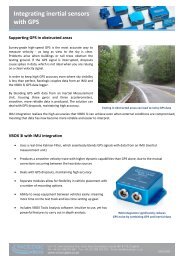Advanced Circuit Driving Techniques - Racelogic
Advanced Circuit Driving Techniques - Racelogic
Advanced Circuit Driving Techniques - Racelogic
You also want an ePaper? Increase the reach of your titles
YUMPU automatically turns print PDFs into web optimized ePapers that Google loves.
Two different lines<br />
This seems as though you would lose a lot of speed<br />
going round Turn 14, and indeed the wider line has<br />
an apex speed of 89km/h (55mph) compared with<br />
79km/h (49mph) for the tighter line. Yet this line is<br />
0.45s quicker, which is very counter-intuitive!<br />
However, the reason this works is the really interesting<br />
part; the tighter line is 13.9m (45feet) shorter than<br />
the blue line, so even though the blue line had a higher<br />
average speed, the significantly shorter distance has<br />
a pronounced effect and in this example gives a 0.45s<br />
advantage between the entry to Turn 14 and the exit<br />
of Turn 15 and the exit speeds are almost identical.<br />
Incidentally, the blue trace was my team mate’s fastest<br />
lap, who is an instructor at the circuit who was quite<br />
surprised when I showed him the data!<br />
Time gained using the shorter path<br />
Above is the data shown in the analysis software,<br />
the lower graph is the Delta-T or continuous time<br />
difference between the two laps (using position not<br />
distance as this wouldn’t be accurate for such a<br />
situation) and the upper trace is the velocity. You can<br />
also see in the video that I am much further over<br />
www.VideoVBOX.co.uk<br />
towards the kerbing at this point, and also travelling 6<br />
mph slower.<br />
However, at the turn in point for Turn 15 I have<br />
travelled 13.9m (45 feet) less distance than the blue<br />
path, which has given me a big advantage.”<br />
7




